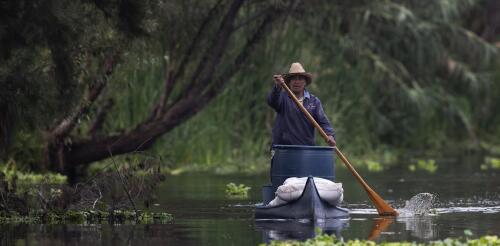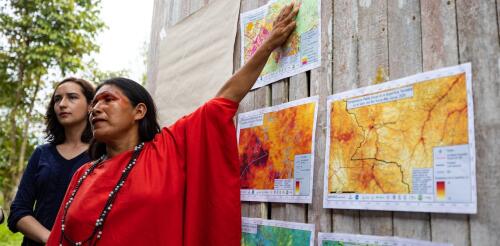Peru
“Dune,” widely considered one of the best sci-fi novels of all time, continues to influence how writers, artists and inventors envision the future. Of course, there are Denis Villeneuve’s visually stunning films, “Dune: Part One” (2021) and “Dune: Part Two” (2024). But Frank Herbert’s masterpiece also helped Afrofuturist novelist Octavia Butler imagine a future of conflict amid environmental catastrophe; it inspired Elon Musk to build SpaceX and Tesla and push humanity toward the stars and a greener future; and it’s hard not to see parallels in George Lucas’ “Star Wars” franchise, especially their fascination with desert planets and giant worms. And yet when Herbert sat down in 1963 to start writing “Dune,” he wasn’t thinking about how to leave Earth behind. He was thinking about how to save it. Herbert wanted to tell a story about the environmental crisis on our own planet, a world dr...
In dozens of archaeological discoveries around the world, from the once-successful reservoirs and canals of Angkor Wat in Cambodia to the deserted Viking colonies of Greenland, new evidence paints pictures of civilizations struggling with unforeseen climate changes and the reality that their farming practices had become unsustainable. Among these discoveries are also success stories, where ancient farming practices helped civilizations survive the hard times. Zuni farmers in the southwestern United States made it through long stretches of extremely low rainfall between A.D. 1200 and 1400 by embracing small-scale, decentralized irrigation systems. Farmers in Ghana coped with severe droughts from 1450 to 1650 by planting indigenous African grains, like drought-tolerant pearl millet. Ancient practices like these are gaining new interest today. As countries face unprecedented heat waves, storms and melting glaciers, some farmers and international development organizations are rea...
Leer en español ou em português The Ashéninka woman with the painted face radiated a calm, patient confidence as she stood on the sandy banks of the Amonia River and faced the loggers threatening her Amazonian community. The loggers had bulldozed a trail over the mahogany and cedar saplings she had planted, and blocked the creeks her community relied on for drinking water and fish. Now, the outsiders wanted to widen the trail into a road to access the towering rainforests that unite the Peruvian and Brazilian border along the Juruá River. María Elena Paredes, as head of the Sawawo Hito 40 monitoring committee, said no, and her community stood by her. She knew she represented not just her community and the other Peruvian Indigenous communities, but also her Brazilian cousins downstream who also rely on these forests, waters and fish. Roads beget more roads. The Interoceanic Highway, shown here, allowed logge...

